Window Balancers
Balancer assemblies on each side of a single hung or double hung window that all the sliding window sash(es) to move up & and down & stay open. Balancers are made up of a tension system & hardware to connect it to the moving sash.
Each moving sash has two balancers. Single hung windows have two balancers, double hung windows have four balancers.
Window balancers come in three main main categories.
Select your type of balancer system below to see more detailed descriptions & view components.
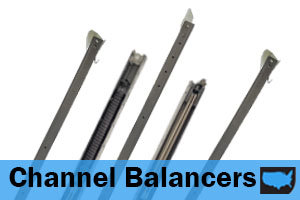
Channel Balancers
Channel balancers are used in both tilting and non-tilt windows but are most common in older non-tilt window models.
Most balancers are 5/8” (channel depth) & have a 9/16“ channel width. 3/8“ (channel depth) balancers with a 13/32“ channel width are also available but much less common.
Channel balancers are a (1) cord and spring pulley system inside of (2) a U-shaped steel channel with (3) an end clip that attaches to the sliding sash & (4a & 4b) plastic ends on the top and bottom attached with rivets.
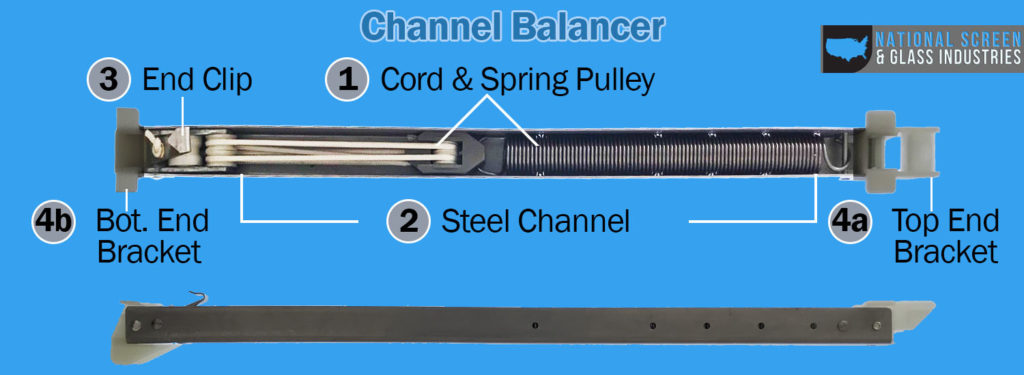
(1) Cord & Spring Pulley
This is the mechanism that allows the window to operate. A string connects the pulley with the spring to provide tension to allow the window sash slide smoothly up and down. The spring is built with a tension to hold specific weight range of window sash (ex. 8 – 12 lbs.).
(2) Steel Channel & Stamp
The steel channel is the sleeve that holds all of the balancer parts together. The open side of the balancer faces out toward the window sashes when installed. The flat back side of the steel channel goes inside the window frame when installed.
The stamp on the back flat side of the balancer indicates the length of the channel and tension weight of the balancer.
Most often the stamp is a four digit code (ex. 1210) but less common series have different indicators (ex. 19-7, 8TGX, etc.).
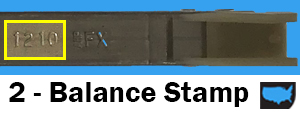
(3) End Clips
End clips attach to the window frame (non-tilt) or into a shoe cam (tilt). This holds the end of the cord which engage the pulley when opening the sash or release tension when closing the sash.
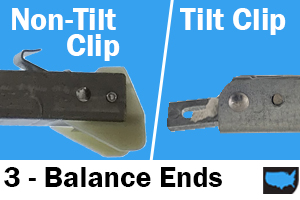
(4) End Brackets
End brackets keep the balancers in place in the window frame. When a non-tilt sash needs to be removed the top end catches on the take-out clip, holding the balancer in the frame allowing the the sash to release.
There are three common combinations of end brackets but hundreds of styles are available depending on the series of balancer.
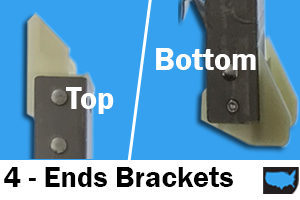
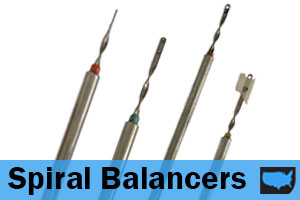
Spiral Balancers
Spiral balancers are mostly used on tilting windows & have a tube width of ⅜” or ⅝”. Some non-tilt windows (mostly old aluminum) also use spirals balancers.
Spiral balancers are (1) steel tubes with (2) a tension-tightened metal spiral rod inside, (3) a colored nylon bearing, & (4) a rod end at the bottom of the spiral. The rod end attaches to the balancer to a balancer shoe or carrier.

(1) Steel Tube
The steel tube encloses the spiral rod. The hole at the top is where the screw attaches to the window frame.
(2) Spiral Rod
The spiral rod is the tensioned part of the balancer that operates the movement of the window sash.
(3) Nylon Bearing
Spiral balancers are have tension for the weight of sashes they operate, usually a weight range (ex.18-21 lbs.).
Each color bearing indicates different weight ranges. (Note: these are not universal colors & ranges, they differ with balancer sizes, window brands, etc.)
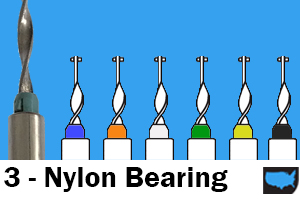
(4) Rod End
The ends are where the balancer connects to the window sash and the type of end determines how it connect and what hardware it can use. The most common types are pins, holes (one or two), & wings.
Pin & wing ends fit directly into shoe cams. Holes connect to carriers or brackets which attach to the window sash.
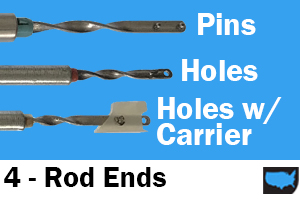

Constant Force Balancers
Constant Force balancers are a newer system in windows. CF balancers are mostly on tilting windows.
1/2″ wide metal coils are most common but coils can be a variety of sizes from 13/32″ to 3/4″.
CF balancers come in a variety of configurations. The most common contain at least one metal coil fixed in/on a plastic housing attached to a cam.

(1) Metal Coils
The coils hold the tension that allow the window sash(es) to operate. Most assemblies have between one and three coils but can contain more depending on the weight of the sash and balancer system.
(2) Plastic Housing
Housings hold the coil(s) and keep them in place when installed in the window frame.
(3) Shoe, Cam, & Pivot Bar
The shoe is a plastic assembly where the cam is located. Shoes hold one end of the metal coil(s) & lock in the pivot bar.
The pivot bar is attached to the window sash and fits into the cam. This is what connects the balancer system & window sash as well allows the sash to tilt.
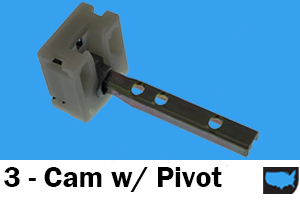
(4) Screw Holes
These are where the balancer attaches to the window frame. Some systems attach on the coil, others on plastic housings.
